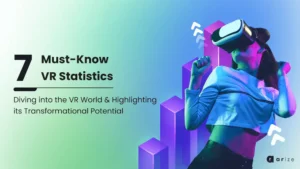Augmented Reality is transforming different landscapes globally. While its effect in sectors like gaming, travel, and manufacturing are well-known, others are not so widely publicized.
Augmented Reality in art has recently gained much attention as creatives seek new ways to express themselves in a traditional realm using new technologies.
It is a valuable tool for design, collaboration, and innovation, three critical areas in the art world.
The arts and culture are exploring immersive technologies as a medium for creative expression. The new solutions and opportunities AR affords will allow a much wider audience to enjoy arts and culture. Moreover, it makes the landscape more level-playing. It is also addressing a problem that has plagued the industry for decades.
Augmenting Art
AR exists to augment the physical environment with digital enhancements, and augmenting works of art will take the concept to a whole new level for the viewer.
Not only art lovers can interact with holographic elements or deepen their immersion in the world surrounding a piece, even allowing them to view multiple art masterpieces simultaneously with smart glasses.
Augmented Reality is also a perfect fit for transforming the live theatre experience, adding extra layers of content to scenes by including augmented elements into set design, and pulling the audience deeper into the storyline.
Companies like the Royal Shakespeare Company have already explored the future of immersive theatre and the opportunities for real-time immersive performances connected across multiple platforms, changing how audiences experience live performances.
Art for Everyone
Outside of a creative standpoint, AR can also work to make arts and culture experience more open to people worldwide. It is also opening it up to audiences that may not have had the means or access to the current landscape.
Museums and art galleries now create digital versions of events. They are letting users explore exhibitions using smartphones to navigate a virtual version of the show.
During the COVID-19 pandemic, the National Gallery in London launched an initiative to bring augmented reality art to public spaces. They allowed galleries to safely curate their artwork and let users view them through the Augmented Gallery app. The app overlaid some of the world’s finest art on street corners, window shops, and other public spaces.
Technology Combined with Creativity
The way the arts are experimenting and utilizing AR technology perfectly. Demonstrates that it is not technology that makes these projects special. But the unique ways in which creatives apply the technology to their situation.
AR can bring new life to the arts and culture, changing how art can be consumed. And they are opening up the doors to who can consume it.



